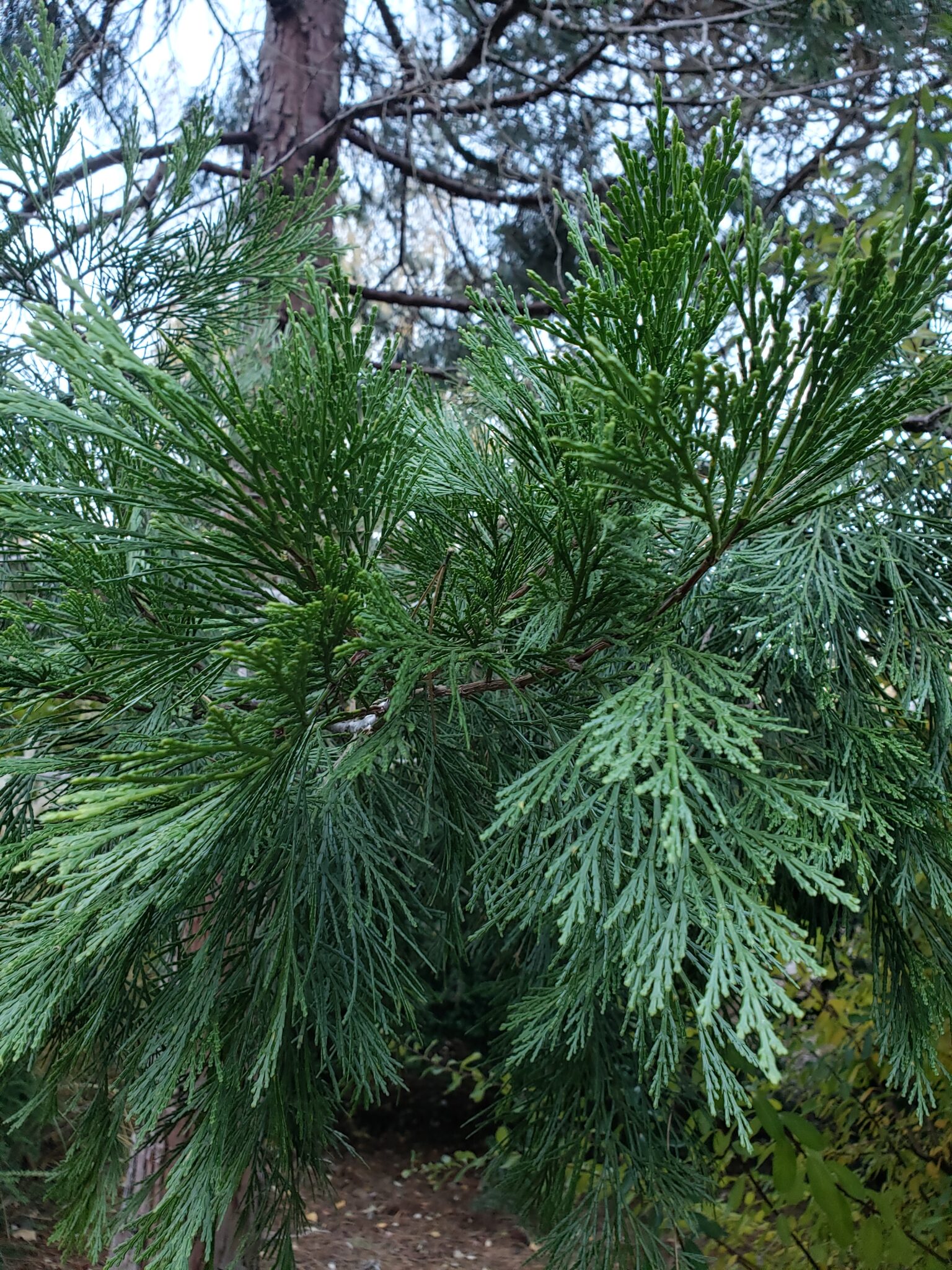
Tree Highlight: Incense Cedar
Incense cedar (Calocedrus decurrens) can be found growing in a wide variety of natural habitats, from wet streamside riparian habitats to dry mountainside habitats. Its native range encompasses mixed conifer forests on the east side of Mt. hood, south through Oregon and down to California. Due to its tolerance for a wide variety of growing conditions, incense cedar can also be grown in the Willamette Valley.
With the trend in the Willamette Valley toward hotter and drier summers, the incense cedar’s tolerance for poor soils, drought, and heat makes it a climate-resilient choice for planting in Portland area yards.
Growth habit
Its columnar form, billowy fans of evergreen scales, shaggy bark, and distinct aroma make the incense cedar an attractive landscape tree.
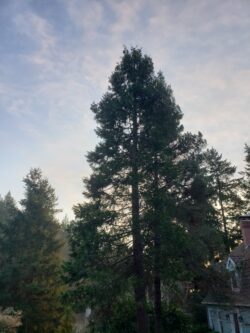
The incense cedar has a columnar form. It can grow to be 150 feet tall in the wild, up to 100 feet tall in landscapes, but only 50 feet in width. Its unique silhouette looks like a tall spire in the landscape.
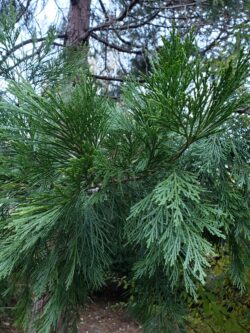
Leaves are chains of overlapping scales arranged as flat branchlets that fan out at the growth tip. Its billowy canopy is dense, which makes incense cedar a good screening tree. When crushed, the distinct, pleasant scent of incense cedar is released.
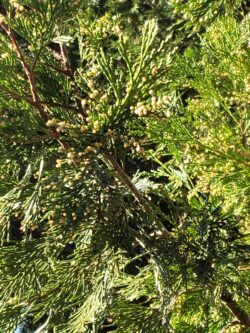
Male pollen cones appear in winter as tiny, distinct yellow rods at the tips of branchlets. The male cones release their pollen in early spring in the Portland area.
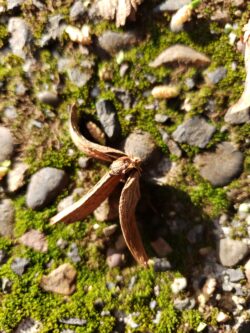
Female cones are ½ – 1 1/2 inches long, resembling green, closed duck bills when immature and open in early fall to look like brown, open duck bills with the tongues sticking out.
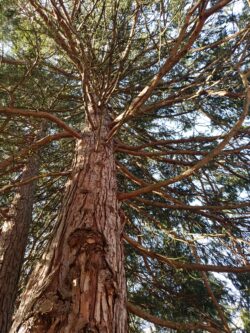
The bark of a mature incense cedar tree is shaggy in appearance and reddish-brown with vertical furrows.
You are probably already familiar with the smell of the incense cedar because its reddish fragrant wood was used in the manufacturing of pencils for decades. On a warm day, the air around an incense cedar is filled with its spicy, pleasant scent.
Tree Planting
Although the incense cedar is tolerant of most growing conditions, the best planting site for an incense cedar is in full to partial sun in soil that does not get waterlogged. As these trees eventually grow quite large for most small urban yards, it is important to consider the full height and spread at maturity when deciding where to plant the young tree. Incense cedar should not be planted under power lines.
Tree Care
Incense cedar is a notoriously low-maintenance tree. It has the ability to close its stomata to prevent water loss, which makes mature trees drought tolerant. Although drought tolerant at maturity, young incense cedars need regular supplemental water for the first few years after planting. Our previous NW Treebune article explains watering needs for newly planted trees.
The incense cedar requires very little regular pruning as it grows.
Incense cedar is generally resistant to decay with the exception of pocket dry rot, and its distinct aroma is insect-repellant.
Notable Specimen
Although incense cedars reach their greatest size and age (up to 500 years old) in northern California and southern Oregon, there are many notable specimens of incense cedar to admire around the Portland area. One beautiful specimen of incense cedar growing in the historic Lone Fir Cemetery in SE Portland has earned Portland Heritage Tree designation. It is 110’ in height and has a very columnar form and a deep green, dense canopy.


